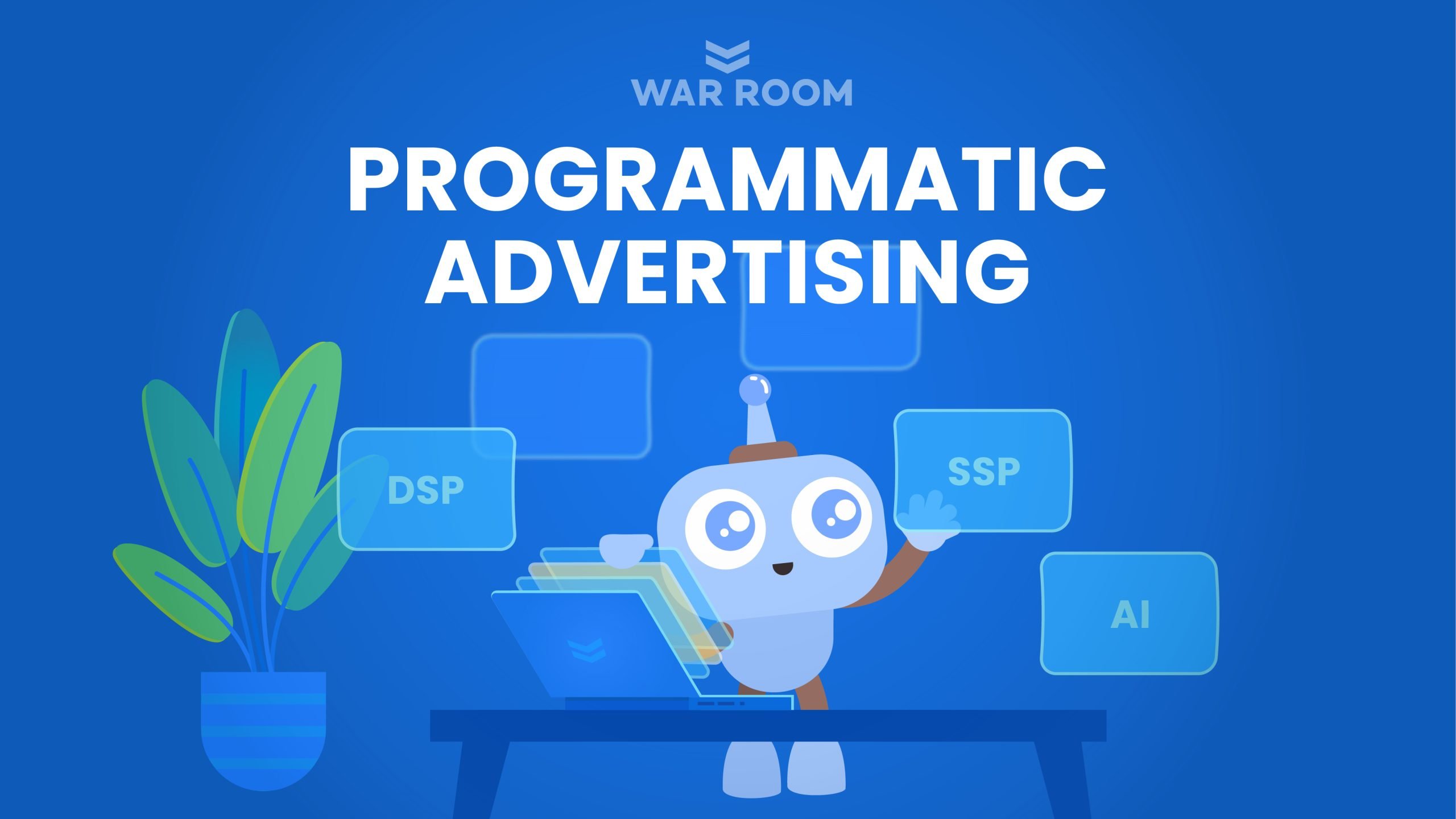A lot of marketing jargon can be confusing. What you need is a point by point breakdown of how each of these programmatic elements is different. Something you could clearly explain at a meeting.
Let’s comb through what makes each of these terms special in the programmatic advertising space.
Here’s the outline of what we’ll cover:
- Programmatic Direct vs Real-Time Bidding (RTB) Definition
- The Biggest Difference Between Programmatic Direct & Real-Time Bidding
- How Programatic Private Marketplace Advertising Fits In
- Rules of Programmatic Direct
- Types of Programmatic Direct
- Elements of Real-Time Bidding
- 2 Types of Real-Time Bidding
- 4 Types of Programmatic Ad Deals
- TL;DR – What Have We Learned
Programmatic Direct vs Real-Time Bidding (RTB) Definition
What is Programmatic Direct?
Programmatic Direct is a term used to describe the process of automating a direct sale of guaranteed advertising between an advertiser and a publisher.
What is Real-Time Bidding (RTB)?
Real-Time Bidding is a term used to describe the buying and selling of online ad inventory that happens through automated auctions in real-time.
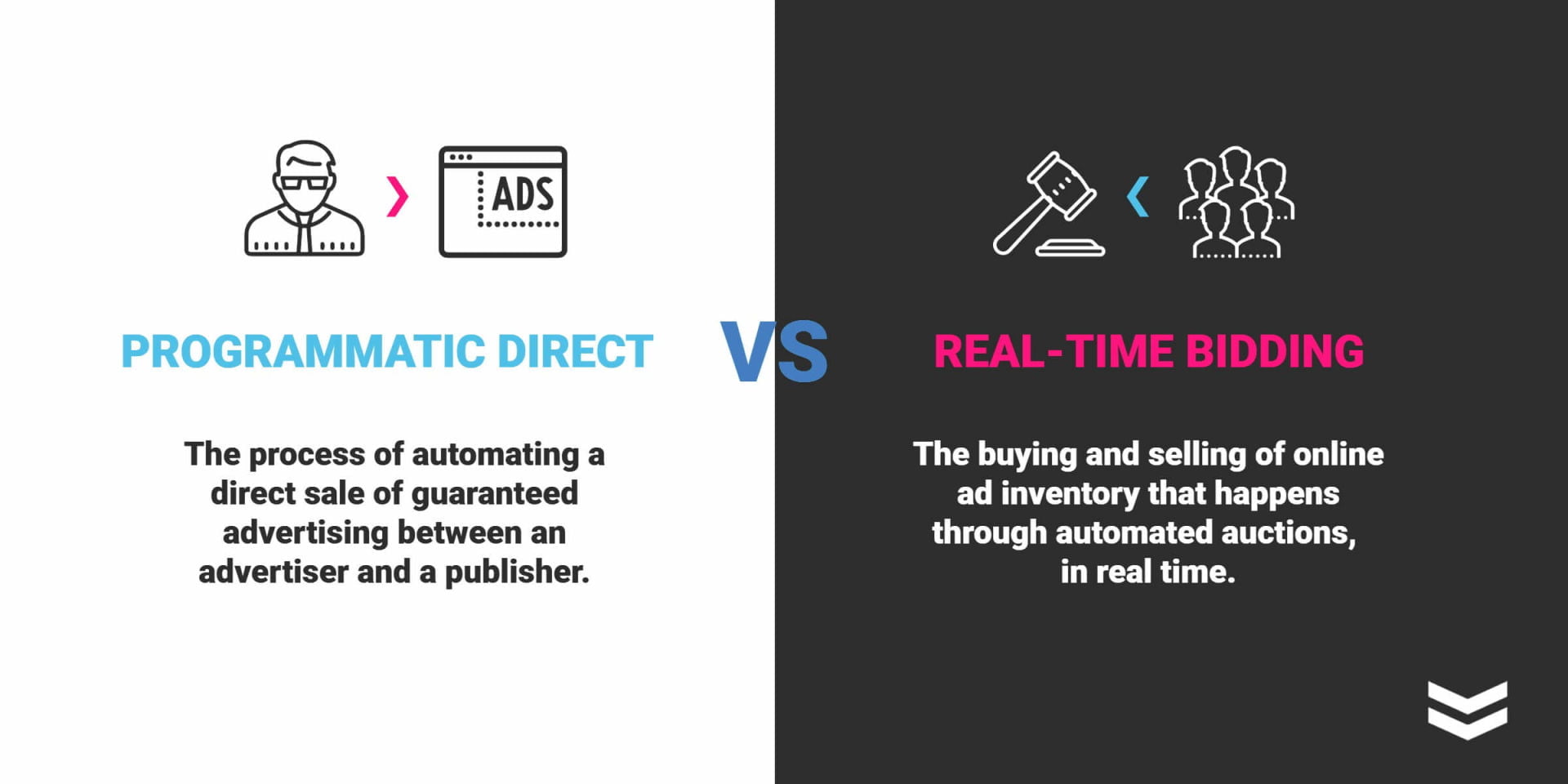
What about programmatic private marketplace advertising?
What about programmatic direct vs. private marketplaces?
Private Marketplace (PMP) advertising gives the power to the advertiser, and you decide whether or not you want to choose specific inventory.
RTB and programmatic direct vs private marketplace programmatic advertising
Known as a private-auction or ‘invitation-only,’ PMP includes unreserved inventory among select buyers, chosen via a Whitelist/Blocklist.

The biggest thing with private marketplace deals is transparency – publishers can choose to reveal specific pieces of information on inventory, and which sites ads will run on – in addition to the Deal ID’s issued.
Deal ID: the unique identifier that represents the deal made between publisher and advertiser within the auction environment, allowing the advertiser to reach premium placements, on-demand, through your DSP platform.
The best part?
You can apply your first-party data to any and all placements made. Basically, all the success you’ve achieved in open exchanges can be applied here, across premium placements.

PMP is premium access at the lowest price, without any time or money wasted. It’s efficient, transparent, and the tech can even replace the need for a direct sales team.
The Biggest Difference Between Programmatic Direct & Real-Time Bidding
Both of these functions operate in the programmatic advertising space, using modern technology to buy and sell ad inventory. However, the major difference is that RTB advertising uses an auction model, while Programmatic Direct uses a non-auction model.
That’s why you should always ask – is advertising inventory being auctioned?
Let’s break down the differences even more!
Rules of Programmatic Direct
For advertising to fall into this category, it needs to follow three basic rules.
#1: The Process Must Be Automated
A direct sale using programmatic technology is automated and uses transactional and delivery automation to be highly effective.
Direct sales were made using old school telephone conversations, spreadsheets, and mails to negotiate the deal in the past. Programmatic Direct completely automates this process.
Find out how programmatic advertising works here.
#2: The Sale Must Be Direct
The direct sale involves a transaction between the buyer and the seller that has been previously negotiated and put in place. Business is conducted directly and things like insertion orders and paperwork are thrown into the sea where they belong. In some cases, additional measures like credit card age verification are used to ensure compliance and security during direct transactions.
#3: The Advertising Must Be Guaranteed
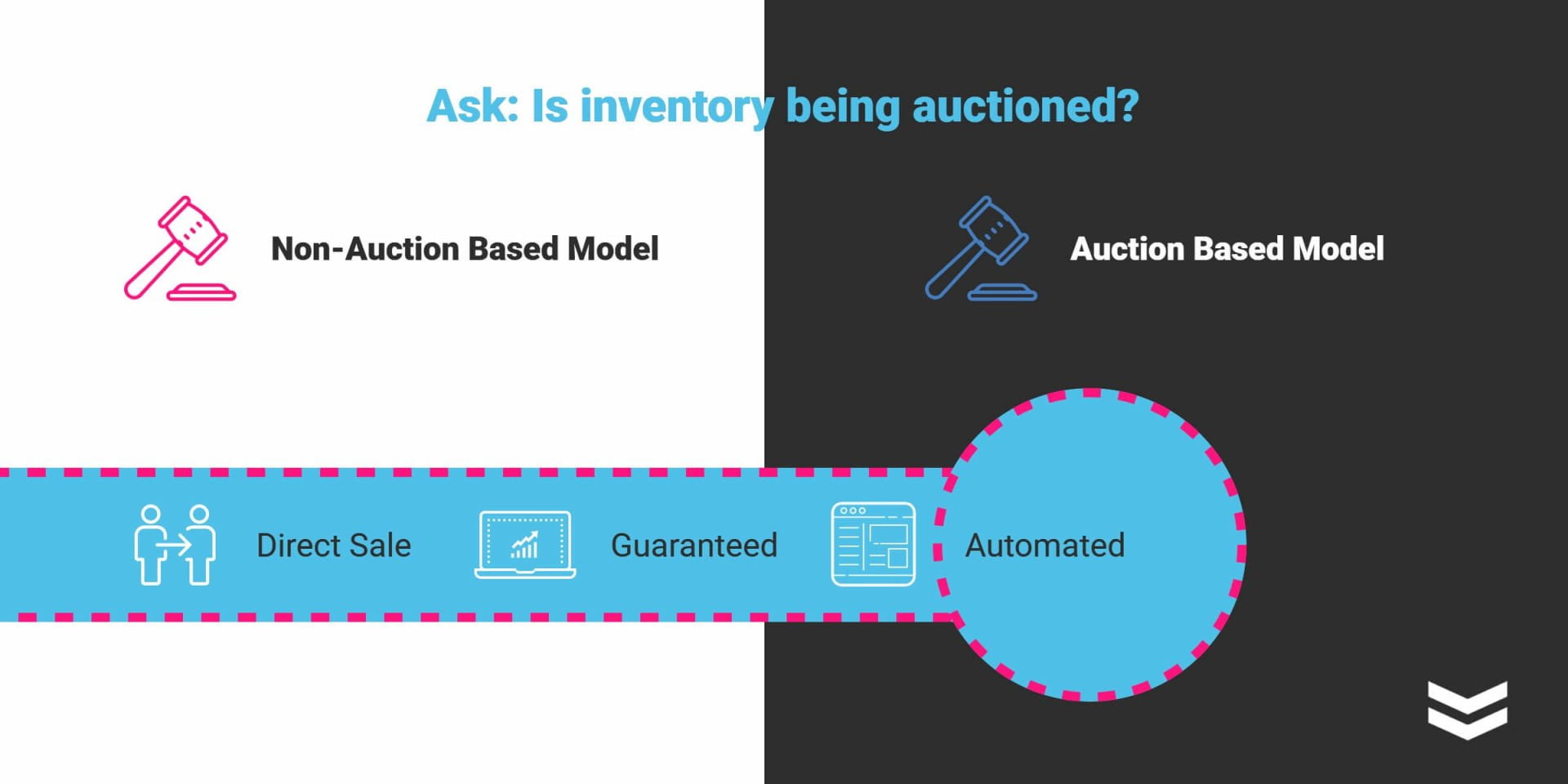
Types of Programmatic Direct
Type 1: Programmatic Guaranteed
Type 2: Preferred Deal
The advertising inventory can also be non-guaranteed, which is called a preferred deal. This is also a type of direct deal, but the ad inventory is unreserved. It means the inventory price is set, but the amount is not guaranteed.
This is quite similar to how a private marketplace works, and advertisers get access to first looks before an agreement is struck.
So, Programmatic Direct uses a non-auction model with fixed pricing and a guaranteed ad inventory purchase.
Elements of Real-Time Bidding
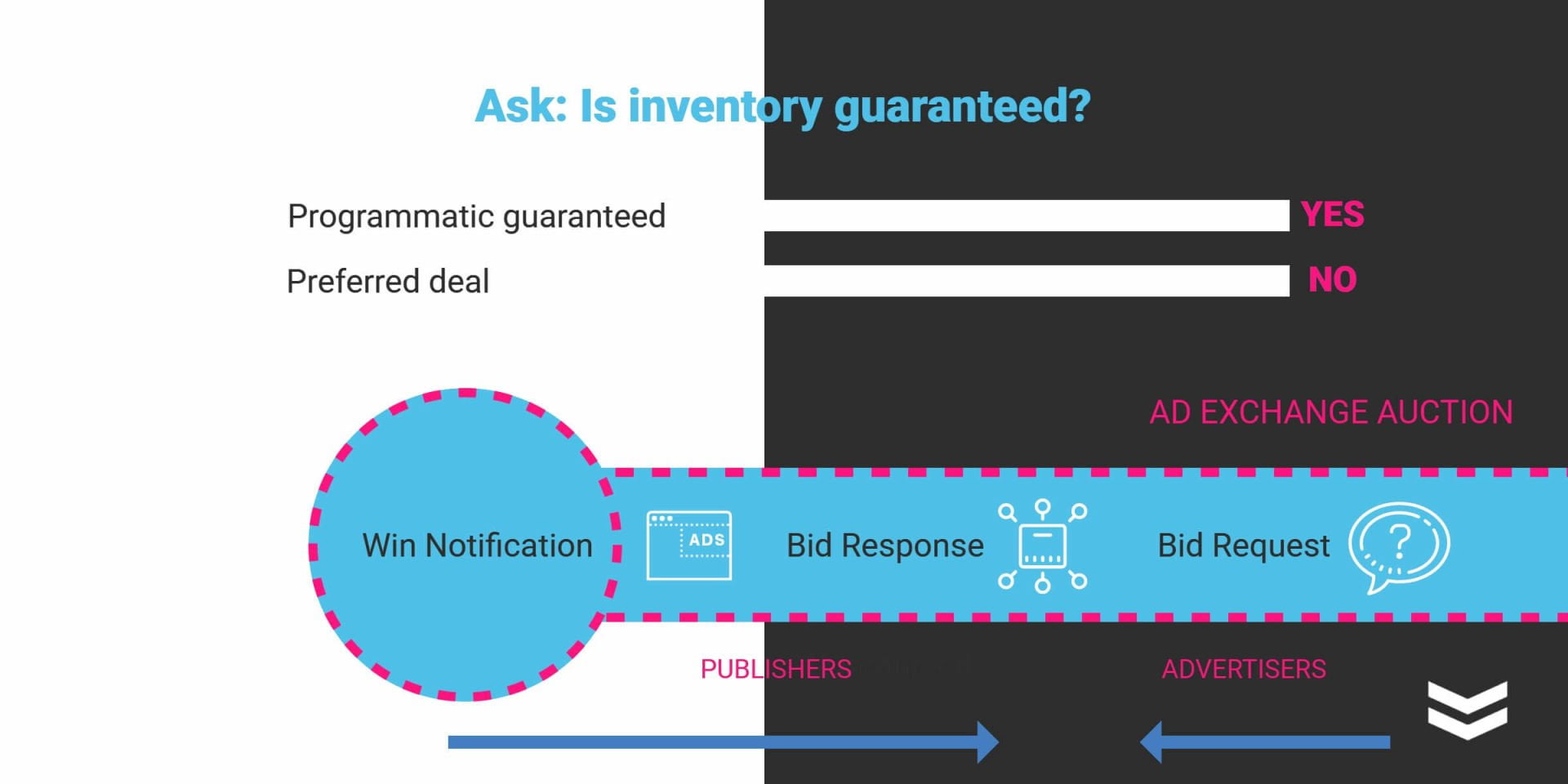
#1: The Advertisers
Ad buyers use a Demand Side Platform (DSP) to automate their ad placement and buy ad space. In other words, they use software to find the best places for their adverts online. These advertisers create buying parameters for each ad campaign.
#2: The Publishers
Ad publishers have a lot of ad space, or inventory, which they make available to the advertisers through the Real-Time Bidding process. A Supply Side Platform (SSP) is used to manage and sell their inventory to the buyers, and parameters are also set here.
#3: The Ad Exchange
An ad exchange connects the DSPs (advertisers) and SSPs (publishers) with each other. Real-time auctions are run as people visit websites all over the net. Auctions take place in milliseconds, matching the right ad with the right ad space, based on preset parameters.
The advertiser gets the best possible space within their ad budget. The publisher gets the highest possible bid on offer from the range of advertisers in that moment. Everyone wins!
2 Types of Real-Time Bidding
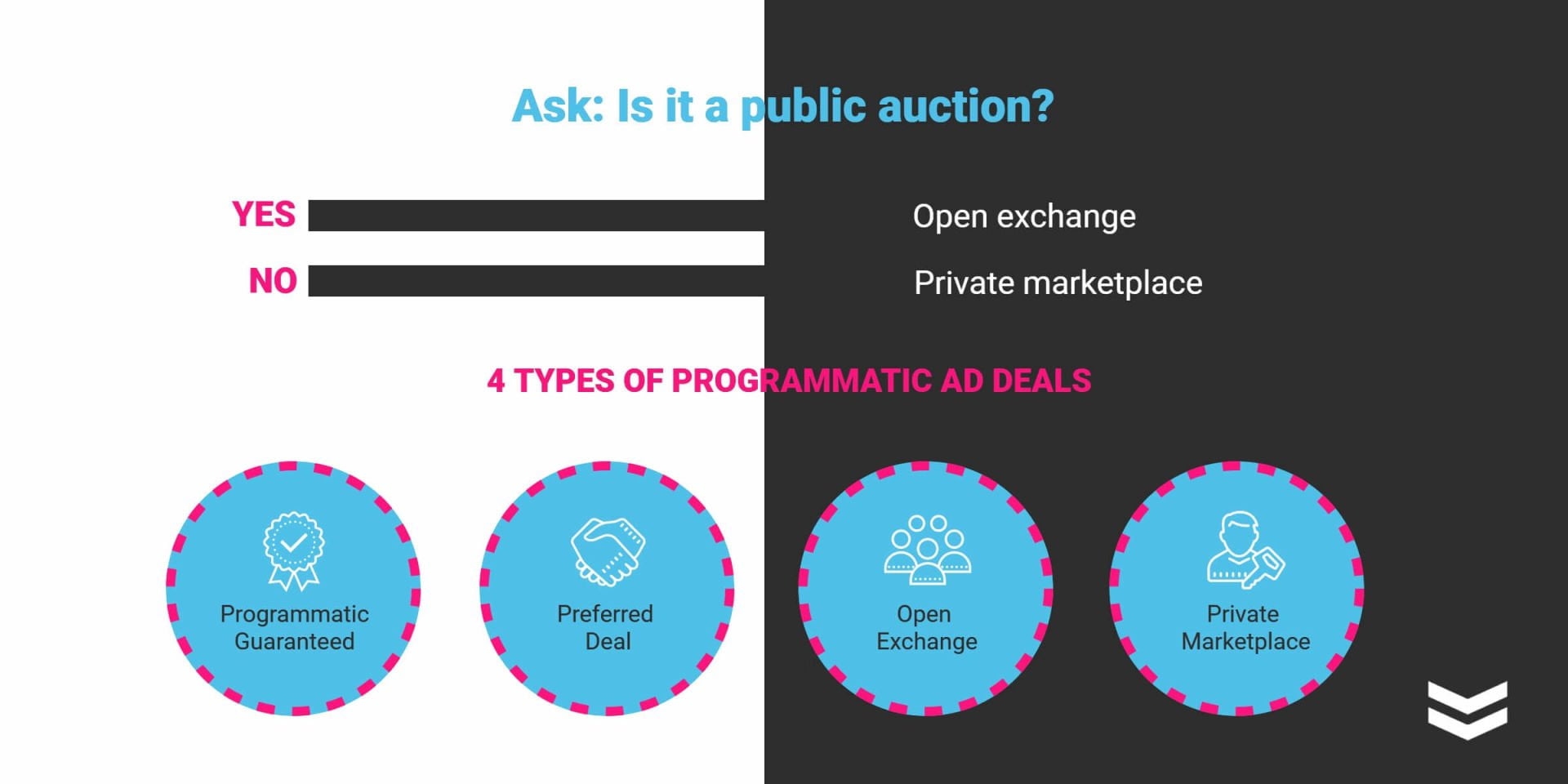
#1: Open Exchange
An open exchange RTB is a public marketplace where publishers auction ad impressions to eligible advertising buyers. This is an equal opportunity exchange.
#2: Private Marketplace
A private marketplace or PMP as it’s called, is an exclusive marketplace where publishers offer premium ad inventory to select advertisers.
To understand what type of Real-Time Bidding (RTB) is happening, ask the question – is it a public auction? If it isn’t, there are private deals in play.
4 Types of Programmatic Ad Deals
So you see, both RTB advertising and Programmatic Direct make up the four different deals you can strike when launching a programmatic advertising campaign.
#1: Programmatic Guaranteed
A Programmatic Direct deal that is pre-negotiated with a specific publisher, and is therefore exclusive. Fixed parameters are struck, and long term relationships are possible.
#2: Preferred Deal
A Programmatic Direct deal that offers private access but an unreserved fixed-rate, promises some priority over ad inventory before it’s offered to everyone else.
#3: Open Exchange
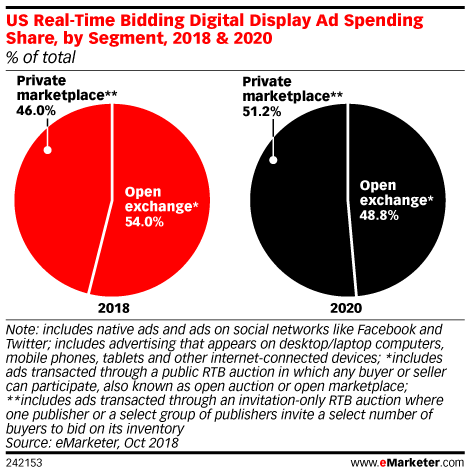
#4: Private Marketplace
Real-Time Bidding that happens in a closed, private marketplace where publishers invite specific buyers to bid on their available inventory.
When looking at Programmatic Direct vs RTB, you need to see them as different sides of the same coin. Now that you understand the real differences between them, making deals will be easier.
Each type of deal has pros and cons, but brands have found success across the board. It’s a good idea to discuss which of these deals will best suit your upcoming campaign’s needs with your advertising partner.
What Have We Learned?
Programmatic Direct:
The direct sale of guaranteed advertising between a publisher and advertiser.
It must be an automated process.
It is a direct sell.
The advertising has to be guaranteed.
Real-Time Bidding:
Online ad inventory being sold and bought through real-time, automated auctions.
Made up of: Advertisers, Publishers and Ad Exchanges.
Ad buyers use a Demand Side Platform (DSP) to buy ad space.
Publishers make ad space available for purchase through Supply Side Platforms (SSP).
Advertisers (DSP) and Publishers (SSP) are connected through ad exchanges and real-time auctions are ran. Advertisers try to get the best ad space within their budget and the publisher gets the highest bid.
The main difference: RTB uses an auction model, whereas Programmatic Direct DOES NOT.
4 Types of Programmatic Ad Deals
Programmatic Direct and Real-Time Bidding combined makes up the 4 types of programmatic advertising deals.
Programmatic Guaranteed (Programmatic Direct): a direct deal where factors such as impressions, prices and positions are set in stone.
Preferred Deal (Programmatic Direct): another type of direct deal but has unreserved ad inventory. Price is set but the amount isn’t guaranteed. (this type is similar to Private Marketplaces, where advertisers get first access before reaching an agreement).
Private Marketplace (RTB): publishers offer premium ad inventory exclusively to select advertisers.
Open Exchange (RTB): an equal opportunity exchange public marketplace. This is where advertisers bid on ad impressions that publishers put in the auction.




